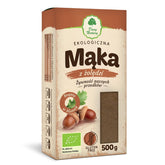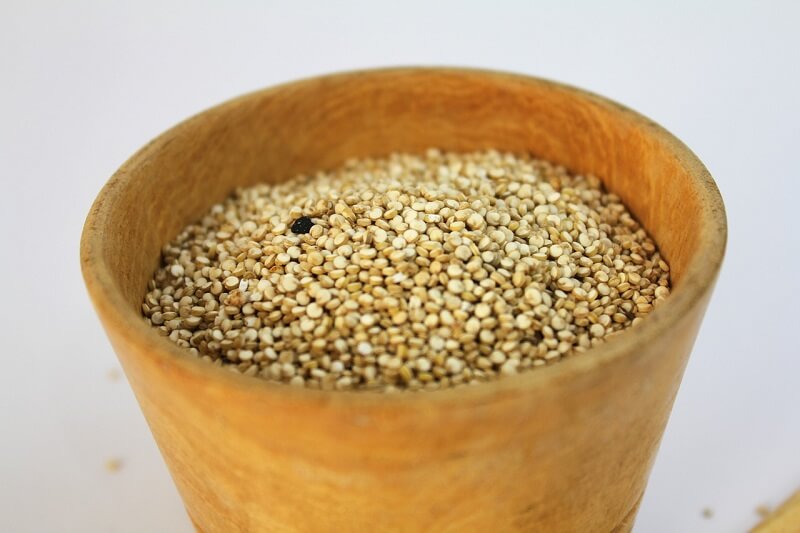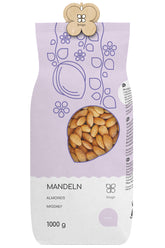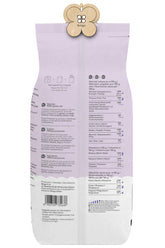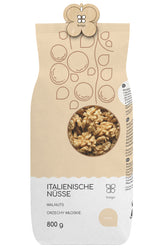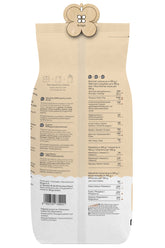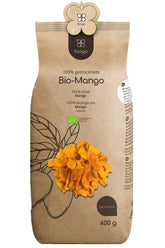Expanded Amaranth
- The history of amaranth
- Expanded amaranth, properties?
- Who should use it?
- When to use?
- Example dishes
- Nutritional values of amaranth
- Examples of administration methods
- How is it used in medicine?
The history of amaranth
It is one of the few plants with such a rich, centuries-old tradition. The oldest historical sources date expanded amaranth back to the 3rd century BC. For many years, it was used primarily as a decorative species, enriching spaces with an extremely attractive contrast of vibrant, intensely purple flowers and light green leaves. However, the Incas, Mayans, and Native Americans were already convinced of amaranth's beneficial properties.
In later centuries, the fate of this unique plant changed like in a kaleidoscope: at one time it was considered sacred and was the basis for sweet, honey-enriched pastries, at another time - when the Spanish conquistadors discovered this - it was celebrated as the devil's herb and the blood of prisoners was added to amaranth pastries (e.g. tortillas). For this reason, this unique species was on the verge of complete extinction - wherever the Christian religion prevailed, its cultivation was also prohibited. Fortunately, after many years of disfavor, amaranth has returned to kitchens all over the world - including European ones. Currently, in the 21st century, it is experiencing a renaissance. It impresses with its unique properties that should not be underestimated.
Expanded amaranth, properties?
Amaranth grains do not contain gluten—this is the first of many arguments that have determined that this plant currently enriches many recipes. Among the numerous properties and benefits of expanded amaranth, the following are also worth mentioning:
- an excellent source of digestible protein,
- supports the body’s metabolic processes,
- a rich source of fatty acids that significantly enrich the diet,
- Amaranth provides the body with many essential ingredients, including:
- Iron,
- Phosphorus,
- Magnesium ,
- Calcium,
- Potassium,
- Vitamins (groups: A, B, C and E),
- supports the peristaltic movements of the intestine - contains fiber that supports the work of the digestive system,
- Thanks to the content of a full set of exogenous amino acids, it significantly delays the aging process of the body - it has a positive effect on regenerative processes,
- is an excellent source of energy - it contains carbohydrates, which are undoubtedly an essential part of the diet of people who work physically and mentally (a good supplement for athletes).
Who should use it?
The properties listed above largely already contain the answer to the question "For whom?" However, it's worth pointing out specific applications to highlight the benefits of expanded amaranth in a special way. So, who can we recommend it to?
- Allergy sufferers - Amaranth does not contain gluten, so it can be used by them and added to many recipes,
- People who value proper nutrition - expanded amaranth grains are rich in iron (very good bioavailability),
- People who are under increased physical or mental stress (pupils, students, working people, etc.),
- People who study intensively and are constantly exposed to stress - expanded amaranth contains a large amount of easily absorbable carbohydrates, which are a natural source of energy,
- Anemia - the richness of fatty acids (polyunsaturated), as well as minerals and elements, helps to replenish macro- and microelements.
When to use?
Currently, we can find expanded amaranth in many interesting forms on the market, so it can be used for preparing breakfast and lunch, as well as for sweet afternoon teas and snacks. However, the most common are amaranth seeds, which are used, for example, in cooking, baking, or stewing dishes. However, we should not forget about the special amaranth flour, which significantly improves the quality and taste of baked goods. In addition, thanks to it, you can remove all remaining chemical additives from the recipe that should improve the taste and tenderness of baked goods. Thanks to its properties, amaranth flour also extends its shelf life. It can be used, for example, in the preparation of pasta.
Example dishes:
- Pancake,
- Cupcakes,
- Amaranth and vegetable soups,
- Salads with added amaranth.
Nutritional values of amaranth
Nutrition experts have hailed amaranth as the "crop of the 21st century." This term is due to its unique properties, thanks to which it can perfectly influence the functioning of the human body.
Expanded amaranth seeds are a valuable source of substances whose optimal amounts in the body ensure proper functioning. The most important of these are easily absorbed proteins and fatty acids. The plant also contains a large amount of fiber, as well as vitamins and minerals that support the body's balance.
The effect of the individual components of expanded amaranth on the functioning of the body is as follows:
- Protein provides essential amino acids that influence many processes in the body. Importantly, the protein content in scarlet is much higher than in other cereals. Fatty acids lower bad cholesterol and thus significantly reduce the risk of problems related to the circulatory system.
- Fiber improves intestinal peristalsis, helps lower cholesterol levels in the blood and cleanses the body,
- Vitamins A and E, found in expanded amaranth, reduce the risk of serious diseases like Alzheimer's; B vitamins positively affect the functioning of the nervous system, support memory, and allow you to enjoy excellent skin. Amaranth is also a treasure trove of antioxidants! Minerals such as iron, magnesium, calcium, phosphorus, and potassium contribute to meeting all the body's needs.
Examples of administration methods
Amaranth is a grain, making it perfect for making preserves after blending it with traditional flours. This makes it possible to produce bread that's rich in protein and extremely tasty. Amaranth can also be eaten in its seed form. Popping, or popcorn-like amaranth, is perfect as an addition to yogurt or as a standalone snack.
On the other hand, lovers of more exquisite dishes can also use expanded amaranth to prepare tasty lunches or exquisite dinners. It's perfect for steamed dishes, as well as boiled dishes and casseroles. You'll also find flour made from this grain on store shelves, which can be used for any dish that doesn't require gluten (therefore, it's not suitable for baking bread and cakes).
How is it used in medicine?
Due to its excellent effect on the functioning of the human body, expanded amaranth is worth eating not only for pleasure, but also for medicinal purposes. It's worth reaching for:
- People suffering from diseases of the circulatory and skeletal systems,
- pregnant woman,
- Anemia,
- Vegetarian,
- Seniors and convalescents,
- People with a sensitive digestive system,
- suffer from celiac disease,
- People with mineral deficiencies.
We invite you to our online store with Amaranth Expandable , rich in all the properties mentioned.
THE PUBLISHER'S CHOICE
Almonds 1 kg BIOGO
- £11.00
£13.00- £11.00
- Unit price
- / per
Walnuts 800 g BIOGO
- £8.00
£10.00- £8.00
- Unit price
- / per
Dried organic mango 400 g BIOGO
- £10.00
- £10.00
- Unit price
- / per
Dried organic figs 800 g BIOGO
- £28.00
- £28.00
- Unit price
- / per
Unpeeled buckwheat groats 1 kg BIOGO
- £3.00
£3.00- £3.00
- Unit price
- / per
Organic coconut flakes 500 g BIOGO
- £10.00
- £10.00
- Unit price
- / per
Organic oat flakes 600 g BIOGO
- £4.00
- £4.00
- Unit price
- / per


